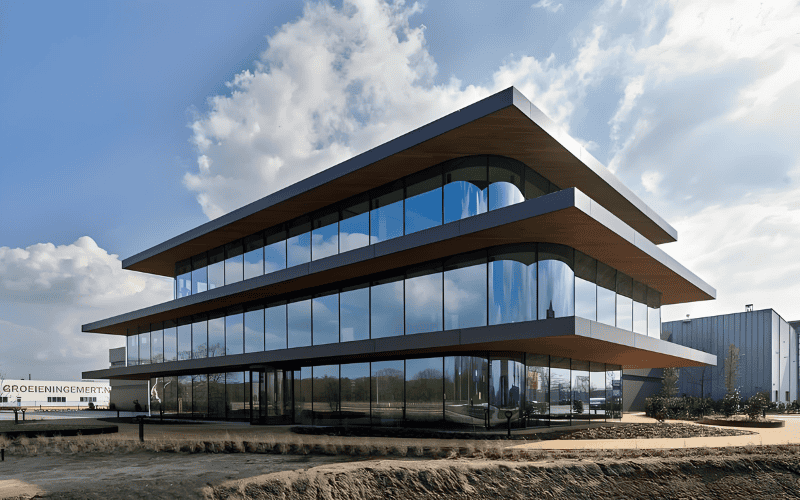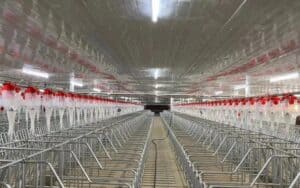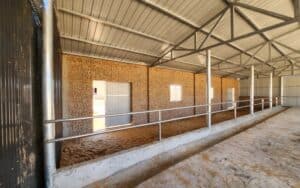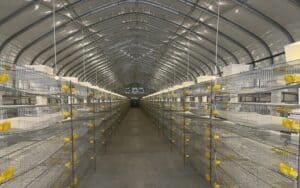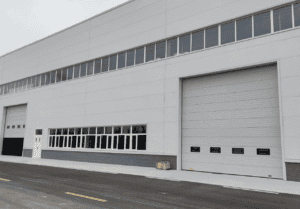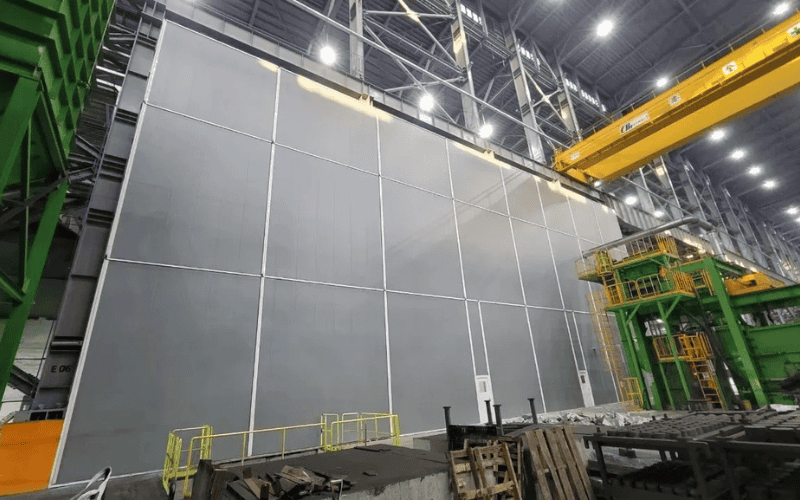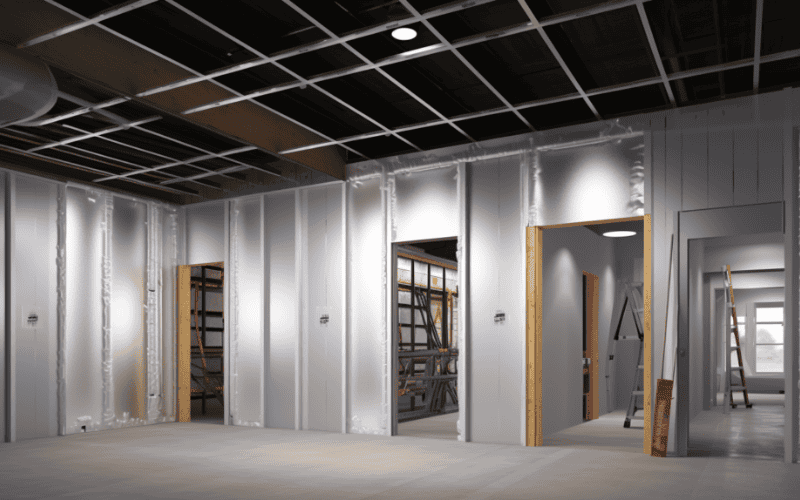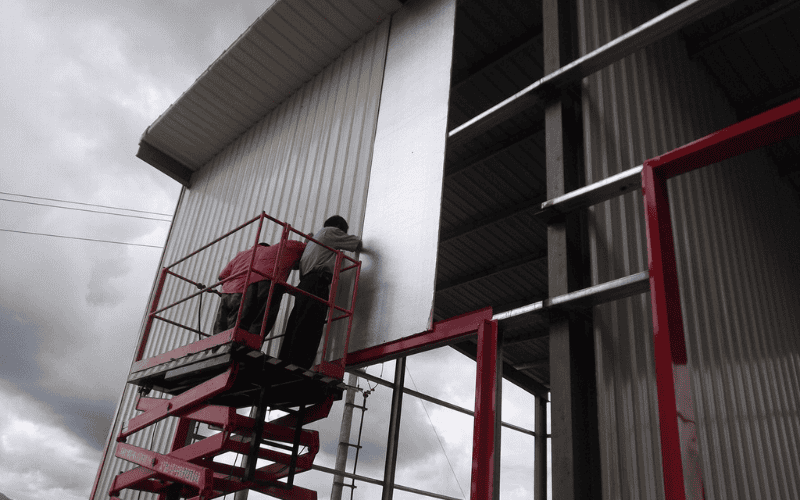Quickly Understand the Basics of Soundproofing
If your steel building has noise issues, it’s important to know how sound travels:
- Airborne noise: Sounds like traffic or voices that travel through the air.
- Structure-borne noise: Vibrations from equipment or impact noise that travel through steel components.
In steel structures, airborne noise often enters through openings like windows and doors, while structure-borne noise travels efficiently through the steel frame itself.
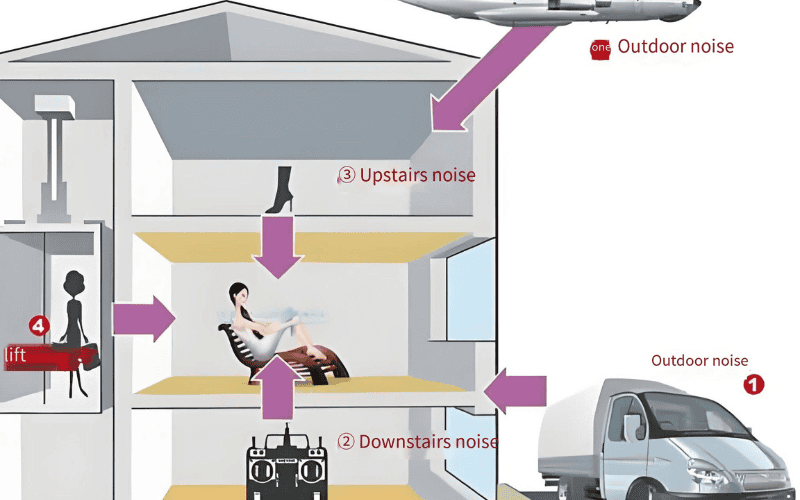
Our role: We design steel structures that reduce these noise issues using two key approaches:
- Blocking sound waves with dense materials and airtight designs.
- Absorbing sound waves with soft, porous materials like insulation to reduce echoes and vibrations.
Is Steel Good for Soundproofing?
Steel’s strengths—its lightweight, rigidity, and large spans—can become challenges when it comes to soundproofing. But that doesn’t mean your steel building is doomed to be noisy.
The Challenges
- Steel surfaces reflect sound easily, leading to echo.
- Steel’s rigidity allows vibrations to travel quickly, amplifying noise.
- Large, uninterrupted steel panels can act like drums, transmitting sound.
The Potential
Steel’s flexibility in design offers unique opportunities for soundproofing:
- Layering with insulation: Steel walls can be paired with soundproof materials like mineral wool or foam to block and absorb sound effectively.
- Design modifications: Adjusting the placement of walls, adding air gaps, or sealing joints can significantly reduce noise transmission.
Our focus: Ensuring that soundproofing works with, not against, the structural integrity of your steel building.
What Affects Soundproofing in Steel Buildings?
When designing a steel structure, we consider several factors that influence soundproofing:
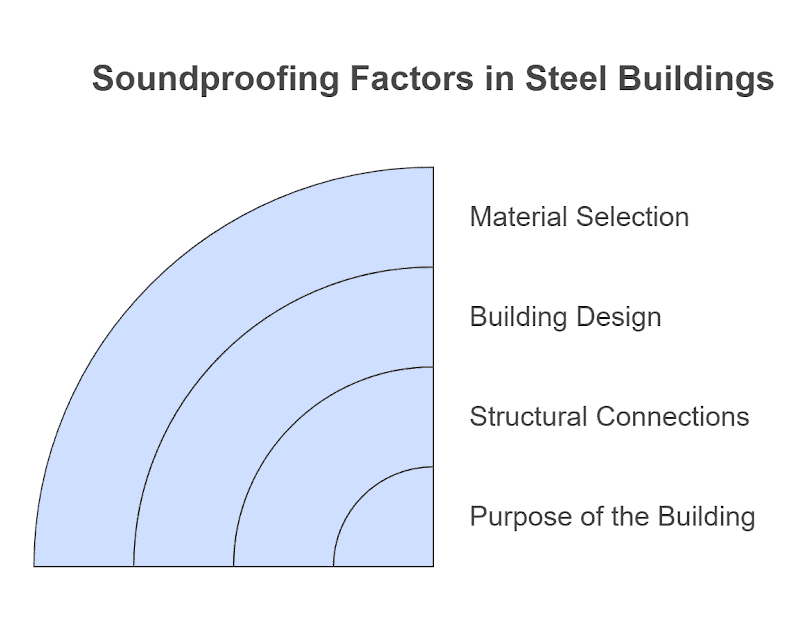
Material Selection
- Thicker steel panels block more sound, especially at higher frequencies.
- Insulation materials like mineral wool or fiberglass reduce both noise and heat loss.
Building Design
- Multi-layered walls and ceilings: Air gaps or insulation layers within the structure improve sound resistance.
- Openings: Windows, doors, and vents are common noise entry points; their design and sealing are critical.
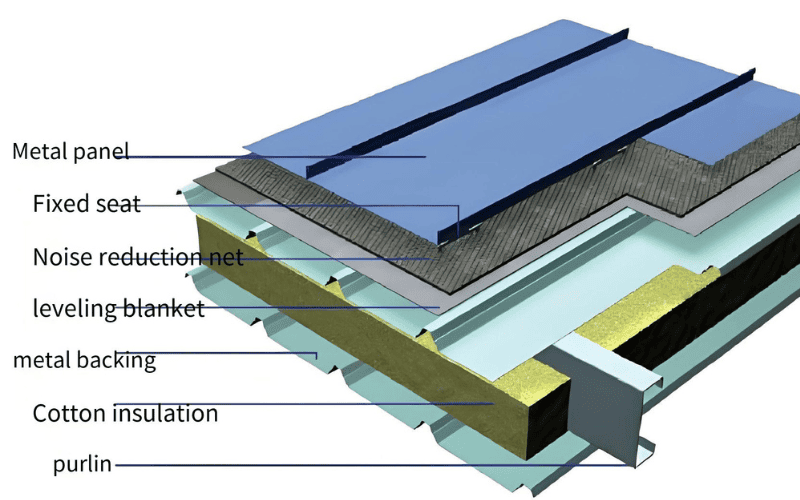
Structural Connections
- Seams and joints: Proper sealing prevents sound leakage.
- Anti-vibration measures: Isolation pads or flexible mounts reduce noise transmission through the steel frame.
Purpose of the Building
Every project is unique, and soundproofing priorities differ:
- Industrial: Focus on controlling equipment noise and vibration.
- Commercial: Prioritize reducing echoes and ensuring privacy.
- Residential: Create a quiet, relaxing environment.
Our role: We adapt the design and materials of your steel structure to align with its specific noise control needs.
Practical Soundproofing Solutions for Steel Buildings
Material Applications
- Insulation: Fill wall cavities with materials like mineral wool or foam for better sound absorption.
- Acoustic panels: Install on walls and ceilings to control echoes, especially in large open spaces.
- Flooring underlays: Use rubber or foam layers to reduce impact noise.
Optimized Structural Design
- Double-layer walls and ceilings: Adding air gaps or insulation between layers improves soundproofing without compromising structural integrity.
- Room-within-a-room designs: Effective for spaces like recording studios or offices within industrial facilities.
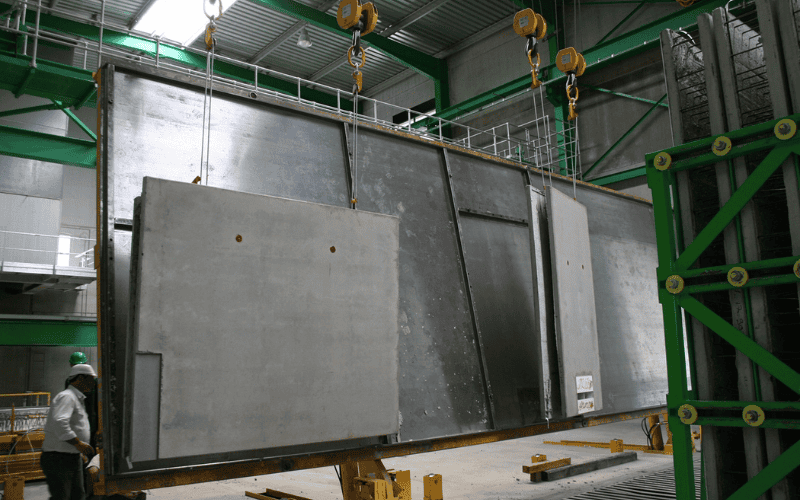
Door and Window Upgrades
- Double-glazed windows: Minimize external noise while maintaining energy efficiency.
- Solid-core doors: Block sound more effectively than hollow doors.
- Sealing gaps: Weatherstripping or acoustic seals prevent sound leaks.
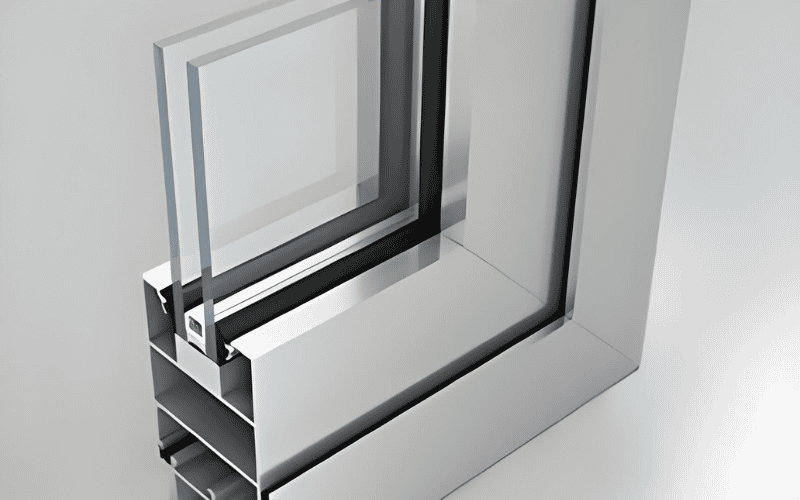
Vibration Isolation
- Anti-vibration mounts: Installed under heavy machinery to isolate vibrations.
- Silencers: Fitted to exhaust systems or vents to reduce mechanical noise.
Acoustic Enhancements
- Decorative panels: Combine sound absorption with aesthetic design in commercial and residential spaces.
- Soft furnishings: Carpets and curtains can play a surprising role in reducing noise.
Our advantage: We integrate these solutions into the steel structure design from the start, ensuring cost and time efficiency.
Balancing Soundproofing with Cost and Sustainability
We know budget is a key consideration for your project. Here’s how we help:
Cost-Effective Strategies
- Basic solutions like insulation and sealing gaps are affordable and provide immediate benefits.
- Advanced systems, such as acoustic panels or double-layer walls, deliver long-term returns by improving functionality and comfort.
Sustainability
- We use environmentally friendly materials like recycled insulation or modular acoustic systems to reduce waste.
- Soundproofing measures often improve energy efficiency, lowering operating costs.
Our role: Helping you achieve the best balance between soundproofing performance, cost, and environmental responsibility.
Next Action
Soundproofing plays a crucial role in making steel buildings functional, comfortable, and suited to their purpose. Whether it’s ensuring a productive workspace, a quiet home, or a noise-controlled industrial facility, proper acoustics can make all the difference.
As you plan your steel structure project, it’s essential to factor in soundproofing early—materials, design, and even the smallest details can impact the final result. If this feels like too much to handle or you’re unsure about getting it just right, don’t worry. We’re here to take the guesswork out of the process and ensure your building performs exactly the way you need it to. Let us help you build a steel structure that doesn’t just stand strong, but sounds right, too.
